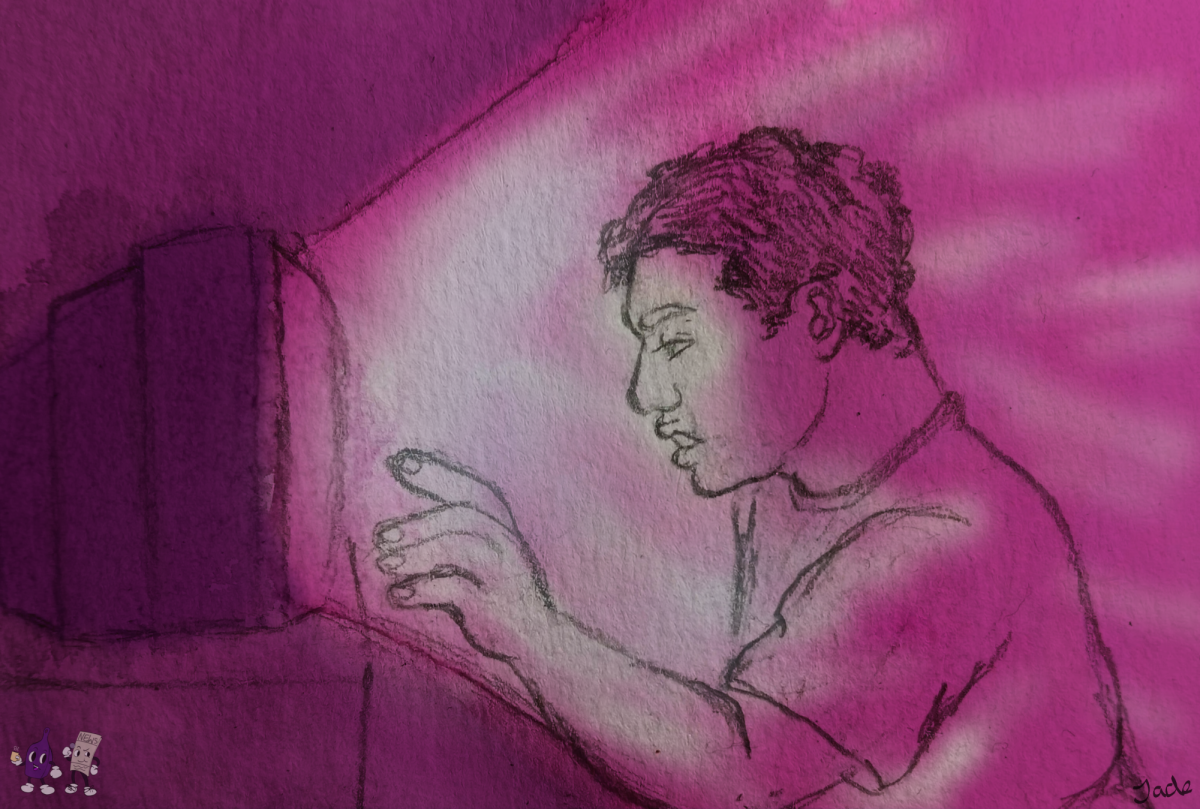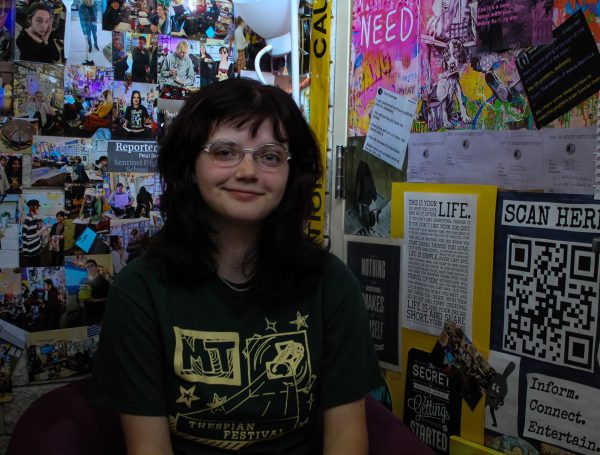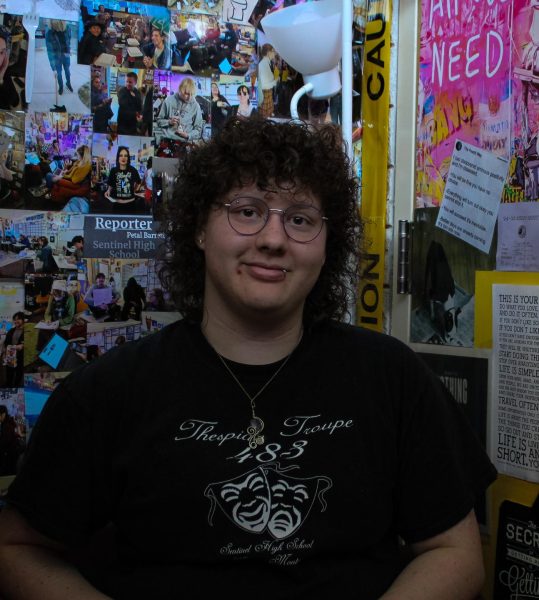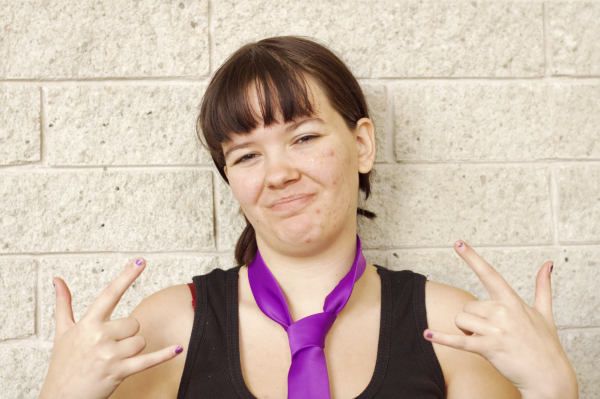Jane Schoenbrun has successfully created one of the 21st century’s most memorable films, sure to become a cult classic of the distant future.
While not everyone who watches this movie will understand it, it still gives the audience a narrative they can shape into their own story and ending. The film goes against many popular stereotypes of the main characters, and leaves the ineffable question of, how does Owen’s and Maddy’s story relate to the queer experience?
The film is an abstract interpretation of a personal experience of the director. It is both a reminder of the most relatable part of every queer teenager’s story, but also that being queer is a completely unique experience.
The queer lifestyle is not meant to be a ‘one size fits all’ narrative. Your own personal experience may not align with that of the director or main characters, which is what makes the film so raw and oftentimes confusing.
It is the best example of the fact that everyone has a story unraveling, that is utterly unique and profound. It is a reminder that the most important thing to be is authentic to yourself.
SUMMARY *SPOILERS AHEAD FROM THIS POINT ON*
In the opening of the movie, we are introduced to the main protagonist, Owen, as a middle school student. As he wanders through the empty hallways, he runs into another student, Maddy.
She’s sitting in a corner by herself, reading an episode guide on The Pink Opaque. Owen cautiously approaches her, curious about the book and what she’s doing. Maddy is excited to discuss the tv show, and even invites Owen over to watch the show.
Since it’s a late night YA show, Owen’s parents don’t allow him to stay up late enough to watch it. Because of this, he lies and ends up sneaking to Maddy’s house.
They watch the show together, and as Owen gets ready to go to sleep that night, Maddy confesses something to him. She confesses that these days, The Pink Opaque feels more like real life than anything else. She can no longer tell the difference between reality and the TV show.
Owen quickly enters highschool, and his and Maddy’s relationship becomes distant. They don’t have conversations, instead Maddy gives him VHS tapes of recorded episodes.
They meet up only once during this time. The interaction is awkward and short lived, but meaningful nonetheless.
In this conversation, Owen admits that he feels empty when he thinks about things like that. Like he knows there’s nothing in his chest, but he’s still scared of opening it up and finding out the truth. He is being completely sincere, which ends the conversation in an awkward way.
This is the beginning of the end for Owen and Maddy’s teenage relationship. During their last sleepover, Maddy confesses her plans of running away to Owen in the hopes that he will come with her. He denies at the last minute, and that is the last time he sees Maddy as an adolescent. In the same month a little later, his mother dies of cancer, The Pink Opaque is cancelled, and Maddy disappears with only a burning TV set left behind.
Years later, in his mid-twenties, Owen runs into an adult Maddy at the grocery store. Maddy leads Owen around town, finally telling him the full story of her disappearance in a nostalgic blow up planetarium.
She reveals that after years of feeling lost, she finally understands that both of them have been trapped in this world by the main antagonist of The Pink Opaque, Mr. Melancholy. She does her best to convince him that they are the main characters of their old favorite TV show, and Owen has no choice but to ignore all of the connection he feels to Maddy’s explanation because of his own fear.
Maddy leaves, presumably back to the world of The Pink Opaque, and Owen grows old, stuck in the body he never felt truly comfortable in.
Years later, a middle-aged Owen staggers around his dead-end job at an arcade, where he finally chooses to acknowledge the “otherness” he’s always known is inside of him. The last scenes of the movie are of Owen splitting open his own chest, full of TV static and dialogue, and going back to work as he profusely apologizes.
REVIEW
In the best way, watching I Saw the TV Glow is like drinking raw milk without separating the chunks. It’s hard to swallow, with layers of grotesque imagery and a familiar longing. It’s a complicated cry for help and understanding that is both disturbing and relatable.
It’s knowing from the beginning that something is different. Something that you can’t place your fingers on, but you can sense it. The uncomfortable feeling that every scene gives you is nostalgic in a suffocating manner, drowning you in the characters emotions.
With its 90s nostalgia and late night reruns, I Saw the Tv Glow makes plenty of parallels to a viewer’s real childhood. The awkwardness of middle school and highschool is so familiar that it’s daunting.
The main characters spend the majority of the movie as awkward teenagers who find it hard to relate or bond with their peers. In the movie’s allusion to the queer experience especially in youth, it hits home in the sense of vulnerability and the struggles of being outside of the norm.
They embrace new identities in an escape from their mundane and gruesome real lives, and start to live through a screen, only finding joy in the TV show they both obsess over. Their connection to these TV characters and each other is all they have, and so it becomes a part of them, permanently. And their decisions in their teenage years continue to follow them into adulthood.
When you see something or find something that feels so right, you hold onto it. It’s those moments in childhood where you see something on TV or meet someone who doesn’t align with the things you’ve been taught. It sparks curiosity, and more than anything, longing.
A longing to be free. To not have to hide a feeling that swallows you whole, that consumes you. You saw the TV glow, you saw it and it lit a fire in your belly. You don’t want to look away, you want to embrace it.
I Saw the TV Glow also beckons a harsh reality of having to oppress your queer experience and joy because you don’t get the choice to freely embrace it. Thousands of queer people don’t get to enjoy the freedoms of self-expression, and it shows how harmful this can be on the mind and soul.
Owens’ decision to not go with Maddy is one made out of fear. And as the movie comes to a close, it’s obvious that this decision haunts him.
He never got to understand why he felt the way he did, so he could never truly move on with his life. He fills it with distractions and the things he believes he is meant to, putting himself in a life he finds unsatisfying. He tries to align with the family “white picket fence’ lifestyle, but despite it, he never truly feels fulfilled or like he has a purpose.
Along with their storytelling skills, Jane Schoenbrun utilizes their technical prowess to convey their own perspective of growing up queer in the 1990s. The lighting, casting, cinematography, and soundtrack choices made by Schoenbren all paint a potentially unsettling but also potentially freeing picture that will, regardless of personal opinion, leave a lasting impression on the audience.
I Saw the TV Glow is shrouded in hazy neon lights that one can’t help but to find meaning in. A pink glow that emanates from a boxy TV screen; the murky blue of a neighborhood adorned by bright chalk drawings; a sickly green hue that seems to smother our protagonist’s family on their way home. The colorful lighting tells a story as important to this movie as the plot, using symbolism and repetition during vital developmental scenes of Owen’s life.
A more specific example of an impressive lighting choice is Maddy’s pivotal monologue to Owen, urging him to remember his “true self”. She stares just off screen, as though simultaneously reminiscing about Owen while talking to him, and describes their life together as the main characters of their favorite childhood show.
In this scene, Maddy sits in a blow-up planetarium just like those brought into elementary schools, covered by darkness and lit solely by the spinning figures of constellations as they emulate a rotation through the night sky. She delivers her intense speech, demanding that Owen accepts that he is not who the world has led him to believe he is.
This scene is also an example of an effective story-telling device that could not have been carried out without the talented and experienced actors cast into these roles. Bridgette Lundy-Paine and Justice Smith express the tale of self-discovery and suppression through 90s nostalgia that seems to fit them so well. Their onscreen chemistry is palpable, and their relationship is a little off right from the first time they meet.
There is something different about Maddy that Lundy-Paine embodies so well, and Owen is drawn to her by his own kindred otherness that Smith portrays with ease. One may find it easy to see the traits found in both characters like a mirror, but they might not quite like just what they see reflected back-a relationship that many find similar between themselves and their favorite childhood shows or movies.
A common device used throughout Schoenbrun’s horror movies is the inclusion of digital media (in the case of I Saw the TV Glow, the fake TV show called The Pink Opaque, which is loosely based off of nostalgic 90s teen shows like Buffy the Vampire Slayer) to relate the audience with the characters’ own story. Schoenbrun is also recognized for their 2021 work We’re All Going to the World’s Fair, which is about a teenage girl who loses herself in the world of an online role-playing game.
These movies are both filmed unconventionally, through TV or computer screens; methods that embrace more unflattering angles as opposed to eradicating them like more mainstream films often do.
An audience is hooked into any movie, whether mainstream, indie, or cult classic, by the soundtrack. The music of I Saw the TV Glow has all the makings of a terrific score: incredibly fitting for the movie while also being a great listen by itself.
The I Saw the TV Glow Original Motion Picture Soundtrack includes well-known artists such as Phoebe Bridgers, Snail Mail, and Florist, while also including more underground musicians like King Woman and Jay Som. Schoenbrun also worked with artist Alex G, an alternative musician with a rather large following, for the soundtrack to We’re All Going to the World’s Fair.
Music is incredibly important to the integrity and watchability of a film, and the music that makes up this score immerses the audience in the world Schoenbrun creates for them deeply.
All in all, whether I Saw the TV Glow is a movie that speaks to you or not, the technical aspects in this film speak multitudes for the director themself and lead viewers deeper and deeper into the alluring world of The Pink Opaque.






